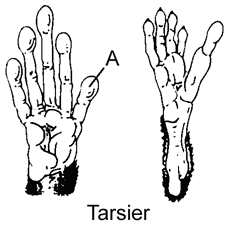A scientist produces an artificial membrane from phospholipids and notices that oxygen, but not glucose, readily moves through the membrane. What might account for the inability of glucose to move through the artificial membrane?
A. The artificial membrane lacked a protein needed for glucose transport.
B. The artificial membrane lacked the appropriate types of phospholipids for glucose transport.
C. Oxygen readily passes through the membrane, so glucose should have as well.
D. The membrane lacked an adequate amount of amphipathic molecules for glucose transport.
E. Thermodynamics does not allow glucose to pass through membranes produced either artificially or from living organisms.
A. The artificial membrane lacked a protein needed for glucose transport.
You might also like to view...
Recombinant DNA technology has been used for over 30 years to produce ____________________ in bacteria for the treatment of diabetes
Fill in the blank(s) with correct word
Lipids with polar and nonpolar ends are said to be
A. bilateral. B. amphipathic. C. amphibolic. D. None of the choices are correct.
The shared primate characteristic depicted in Figure 22-1 is:

a. a prehensile appendage.
b. an opposable thumb.
c. an enlarged foramen magnum.
d. four grasping digits.
e. an opposable thumb.
Explain the mechanics of muscle contraction during a heartbeat, including the stimulus for the contraction
What will be an ideal response?